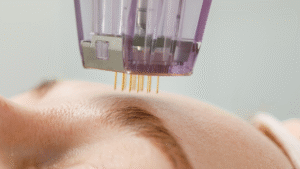Knowing the signs of nutrient deficiency in women is important as these deficiencies are more common than you think—and they often show up long before they’re caught on a lab test.
Why Nutrient Deficiencies Are So Common in Women 30+
Between busy schedules, hormonal changes, and modern diets, women in midlife are uniquely at risk. Even if you’re eating healthy, your body’s needs change with age, stress, and medications. Add gut health issues or absorption challenges, and you have a perfect storm for silent deficiencies.
Common Signs of Nutrient Deficiency in Women
1. Low Energy or Constant Fatigue
Could signal low iron, B12, magnesium, or vitamin D.
- Do you wake up tired even after sleeping?
- Feel winded after mild activity?
- Struggle to stay focused midday?
2. Mood Swings, Irritability, or Anxiety
May point to B vitamin imbalances (B6, B12, folate), magnesium, or omega-3s.
- Are you more reactive lately?
- Feel overwhelmed by small tasks?
- Cry easily or feel emotionally flat?
3. Poor Sleep or Restless Nights
Often tied to magnesium or calcium deficiencies.
- Trouble falling or staying asleep?
- Wake up feeling unrested?
- Muscles twitch at night?
4. Hair Shedding, Brittle Nails, or Dry Skin
Can relate to low iron, zinc, biotin, or essential fatty acids.
- Noticing more hair in the shower?
- Nails cracking or peeling?
- Skin rough, flaky, or dull?
5. Frequent Headaches or Brain Fog
Could signal B vitamin or magnesium deficiency.
- Hard to focus or find words?
- More sensitive to light or noise?
- Low mental stamina?
Other Sneaky Clues Your Nutrients May Be Low
- Craving ice, chocolate, or salty foods → Possible iron or magnesium deficiency
- Bleeding gums or easy bruising → Low vitamin C or K
- Digestive issues → Poor nutrient absorption or low zinc
- Tingling hands/feet → B12 or B6 deficiency
Why Testing Isn’t Always the Full Picture
Many nutrient levels in blood don’t reflect what’s happening inside your cells. For example:
- Magnesium is mostly stored in tissue, not blood
- B12 and folate may appear “normal” even when symptoms are present
- Some women with MTHFR variants need active forms (like methylfolate) regardless of test results
While lab testing is helpful, your symptoms matter just as much. Always listen to what your body is telling you.
How to Replenish Nutrients Safely and Effectively
1. Upgrade Your Food Quality
Focus on nutrient-dense choices:
- Dark leafy greens, colorful vegetables
- Nuts, seeds, legumes, and quality proteins
- Omega-3-rich fats (flax, salmon, walnuts)
2. Support Digestion and Absorption
- Eat mindfully and chew well
- Add probiotics or fermented foods
- Reduce alcohol, sugar, and excessive caffeine
3. Consider Smart Supplementation
- Choose bioavailable forms (e.g., methylated B vitamins, magnesium glycinate)
- Start low and increase gradually
- Take supplements with meals for better absorption
Related Reading
Explore nutrient-specific signs and solutions:
- Top 5 Vitamins Women Over 30 Should Track
- Vitamin B12 for Energy and Brain Health
- Iron Deficiency in Women: Signs & Solutions
FAQ: Nutrient Deficiency in Women Over 30
Can I be deficient even if I eat healthy?
Yes. Stress, digestion, age, and medications can all affect how well you absorb nutrients, even on a good diet.
What’s the most common deficiency in women?
Iron, vitamin D, magnesium, and B12 top the list—especially for women who menstruate or are under chronic stress.
Do I need a blood test to confirm deficiency?
It helps, but isn’t always necessary. Your symptoms often tell the story. If in doubt, talk with your provider.
How long does it take to correct a deficiency?
Some women feel better within days, others may need several weeks or months depending on the nutrient and severity.
Can supplements cause harm?
Yes, if misused. Stick to moderate doses and avoid megadoses unless directed by a provider. Use quality forms that absorb well.
A Word From Vitamins For Woman
Your body speaks in whispers long before it screams. If you’re feeling off, sluggish, or out of sync, a nutrient gap could be the root. You don’t need to wait for a diagnosis to take action. Start with small changes like taking nutrient-rich foods, smart supplements, and pay attention to how you feel.
References
Grober, U., Schmidt, J., & Kisters, K. (2015). Magnesium in prevention and therapy. Nutrients, 7(9), 8199–8226. https://doi.org/10.3390/nu7095388
Allen, L. H. (2008). Causes of vitamin B12 and folate deficiency. Food and Nutrition Bulletin, 29(2_suppl1), S20–S34. https://doi.org/10.1177/15648265080292S105
Camaschella, C. (2015). Iron-deficiency anemia. New England Journal of Medicine, 372(19), 1832–1843. https://doi.org/10.1056/NEJMra1401038
Holick, M. F. (2007). Vitamin D deficiency. New England Journal of Medicine, 357(3), 266–281. https://doi.org/10.1056/NEJMra070553
Huskisson, E., Maggini, S., & Ruf, M. (2007). The role of vitamins and minerals in energy metabolism and well-being. Journal of International Medical Research, 35(3), 277–289. https://doi.org/10.1177/147323000703500301







